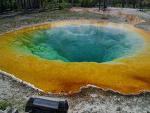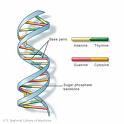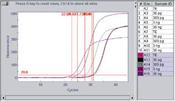Unit 2
Objectives
This unit introduces you to some of the factors that microbes use to survive. Just as you need to eat to survive, microbes need nutrients to replicate and to function. Microbial genetics will also be examined in this unit.
1. Methods and Media
- Define inoculation, incubation, isolation, and contamination.
- List the physical types of media used to culture bacteria and the purpose of each.
- Distinguish between the functional types and their purpose.
- Compare/contrast natural and artificial media.
- Compare/contrast synthetic and non-synthetic media.
- Compare/contrast the terms culture and colony.
- List and explain which features of microbial colonies are useful in identifying organisms.
- Name and describe the use of lab equipment commonly used for culturing bacteria.
- Demonstrate aseptic techniques while handling and transferring cultures.
- Define a pure culture and describe how it is obtained.
2. Nutritional and Physiological Requirements
- List the essential elements required in a bacterial growth medium.
- Distinguish between autotrophic and heterotrophic microbes; phototrophic and chemotrophic microbes; saprophytic and parasitic.
- Correctly use the terms identifying temperature optimums for microbial growth.
- Correctly use the terms which identify the various oxygen requirements of microbes.
- Identify the range of pH preferred by various microbes and the terms that describe these optimal conditions.
- Explain what happens during the different growth phases of a bacterial culture.
- Describe the evidences of microbial growth in solid and liquid media.
3. Metabolism
- Define metabolism and distinguish between anabolism and catabolism.
- Describe the nature and function of enzymes and ways in which they can be named.
- Identify the processes of energy production of the cell in aerobic and anaerobic conditions.
- Identify the variation in ATP production when the cytochrome oxidase system involves NAD and FAD.
4. Microbial Genetics
- Review the building blocks of DNA and RNA.
- Review the replication of DNA using the rules of base pairing.
- Name the types of RNA and the role of each in protein synthesis.
- Correctly use the terms transcription and translation.
- Explain the relationship between a gene and DNA and how a gene controls heredity.
- Define mutation and explain how this alters the metabolism of a cell.
- Explain how phage conversion (lysogeny), transduction, transformation, conjugation, and plasmid transfer occur.
- Explain how a point mutation occurs how it significantly differs from the previous forms of mutation.
- Explain the significance of adaptation and describe the factors that lead to successful adaptation of an organism.
4. Application of Genetic techniques
- Describe the tools and techniques of genetic engineering.
- Define the terms associated with genetic engineering.
- List the applications of recombinant technology, transgenic organisms, genetic treatments and genetic analysis.
Readings: Talaro: Chapters 3, 7, 8, 9, 10
Laboratory Activities and Objectives:
- Demonstrate knowledge of and ability to follow aseptic technique.
- Demonstrate proper culturing procedures.
- Perform and interpret laboratory activities assigned.
- Complete required sections of Laboratory Modules
© 2015 George Wawrzyniak. All Rights Reserved. |



